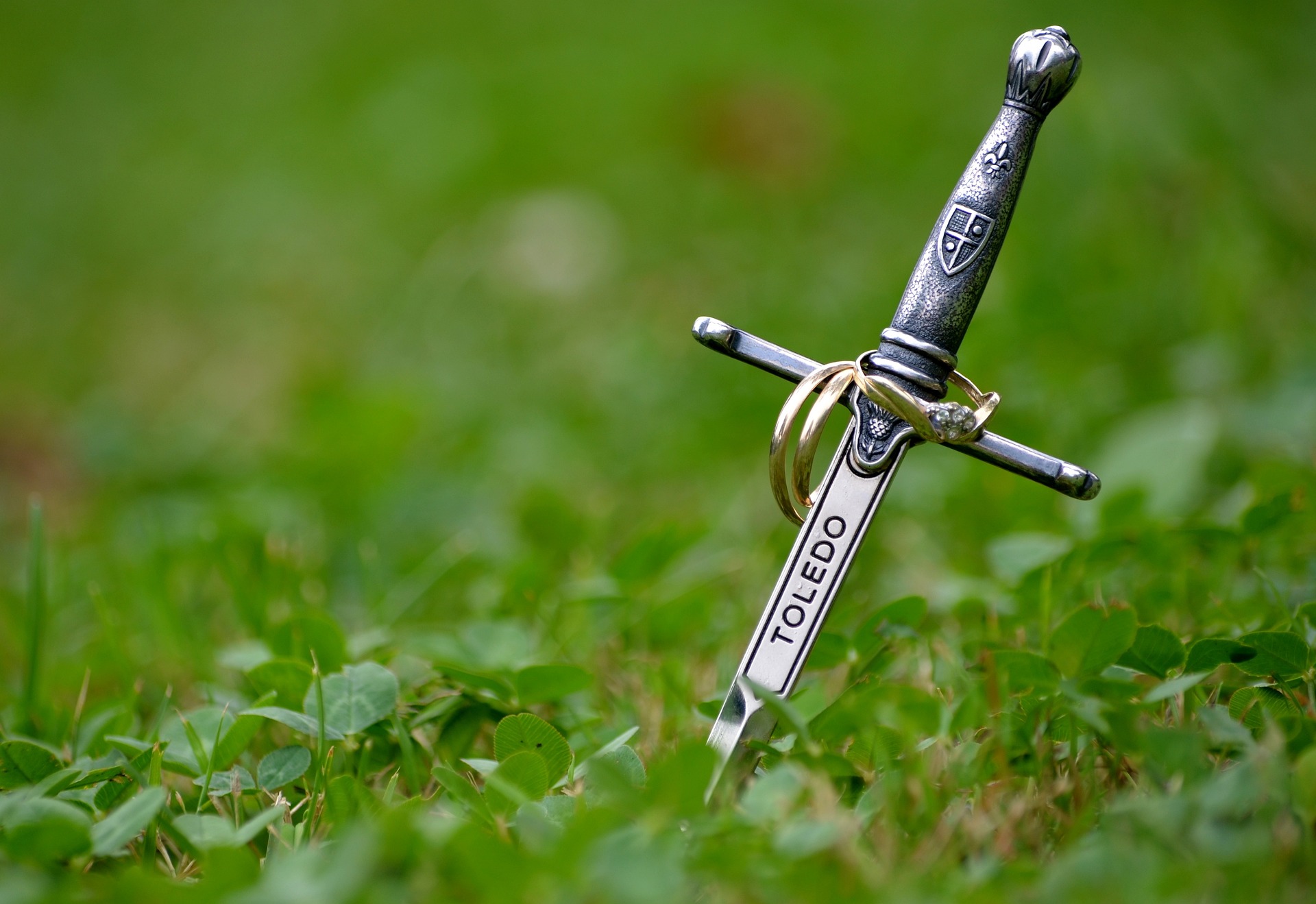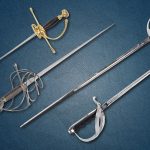Undoubtedly one of my most valued possessions is my katana. The idea of owning one of them is strange. With all of its cultural significance, it could make you feel unworthy. Because of this, I dreaded sharpening it when the time came.
Even though I had prior expertise in honing several blade types, this presented a new difficulty. I felt so anxious. Katanas are not just exquisite swords; mistreating one would be highly disrespectful to Japanese culture.
However, I could do the task flawlessly by working slowly and carefully. How? Let me explain.
How do Katana swords work?
If you don’t know what a katana is, you must be living under a rock. These curved blades are ubiquitous in movies, comic novels, video games, and other forms of popular culture.
But there are many urban legends about this fabled blade. There are many katana myths, and it might take time to determine which are accurate. So let’s get some of this straightened out before we start sharpening.
One of the world’s finest and most good swords is the katana. Their reputation stems from the fact that they served as the samurai’s primary weapon. Samurai and katanas go hand in hand. They complement each other like a blade and hilt. Because of how beautifully they complement one another, it has been stated that a samurai’s soul is bound to his katana.
Katanas, like other swords, are designed for lethal use. They are destructive in battle because of their length (24–30 inches) and distinctive curvature. With a few slashes, the samurai could swiftly finish off their opponents.
But the katana’s unique combination of strength and sharpness makes it special. It is powerful enough never to break and sharp enough to cut through leather armor.
Every katana is made with meticulous care, unlike ordinary swords. A katana is traditionally forged over several months. Each katana was customized for a specific soldier during the tedious and protracted process. The samurai and his weapon were intertwined, as I already stated. A samurai’s katana was buried with him when he passed away.
Katanas are now widely available as collectibles all around us. The majority were not traditionally forged and no longer had the same significance as they did in medieval Japan. However, katanas’ legacy endures forever.
Where Do Katanas Come From?
Every sword knows that strong blades soon get dull and that sharp edges are brittle. Finding a sword that effectively balances these two is exceedingly challenging. But the katana manages to combine the best aspects of both worlds. Japanese swordsmiths have mastered the art of forging blades that are both razor-sharp and robust enough to withstand powerful blows. The term “steel folding” refers to this “secret” procedure.
The greatest katanas are made from three different kinds of steel, not just one or two—these range from soft to hard steel in terms of hardness. Katanas have three layers: a soft core, a medium layer, and a rugged steel sheath covering the rest. The strength and sharpness of katanas are due to these folded layers of steel. Although the interior is soft and not sharp, it cannot break. On the other hand, the katana’s lethal edge comes from its rugged exterior.
Benefits and Drawbacks of Katanas
Compared to other swords, katanas have a lot of advantages. They were the samurai’s preferred weapon because of this. In addition to having the ideal balance of power and sharpness, katanas have a single-slash killing capability. These swords are curved, so you can unsheathe them and cut them in one motion. Before their opponent even realized they were engaged in combat, samurais might dispatch them.
Katanas are much more maneuverable than some other medieval swords. Since they are lightweight, the user can move a lot while engaged in combat.
So, who are you going to fight with your katana? Becomes relevant. The majority of us can say that nobody. Today, katanas serve no useful purpose. You can defend yourself with yours. However, many more effective alternatives to a medieval sword for self-defense exist. Before using a katana, you must first become an expert swordsman.
But is it the reason you have a katana? Nobody purchases a sword like this to use it. No, we buy katanas for their aesthetic value. Because katanas are honorable, we receive them. We have katanas because they have a rich cultural history. Because katanas are legendary, we have them. Owning a katana provides you with something that even the most functional blades will never give since katanas are works of beauty.
The Problem with Katana Sharpening
You can sharpen your katana on your own if it ever becomes dull.
The issue is that this is a challenging and unsettling task. A blade like this requires special care when honing it. Keep in mind that this blade took months to forge. Nevertheless, a few minutes of negligence might utterly wreck the situation.
How is a katana blade sharpened?
Before I demonstrate how to sharpen my katanas, let me caution that this is not a chore for beginners. DO NOT do this if you have no prior experience sharpening blades. Katanas are just too expensive to take a chance like this. Sending them to be sharpened by professionals is your best course of action.
The Katana can be sharpened in a variety of methods. Even electrical sharpeners are an option.
Step 1: wet your stone.
Always wet a whetstone before beginning to sharpen if you’re using one. Before pointing, let your whetstone soak for around 30 minutes. Also, Makemake sure to wet it while it dries after sharpening. Oilstones must also be oiled similarly, especially before pointing like a katana.
Step 2: Place the stone.
Make sure your stone is as strong as you can make it. As you hone your katana, you don’t want it to sag. Pick a sturdy flat surface on which to place your stone. I prefer clamps to keep my stone in place, but it’s not required.
Step 3: Make your razor sharp.
Rub your katana lightly against the sharpening stone while holding it with one hand on the hilt and the other on the blade. Use a 30-degree angle to make diagonal strokes along the blade’s edge. Always check for burrs after every few strokes (over-sharpening is the last thing you want).
Don’t put too much pressure on the blade; be careful. If you apply excessive stress, the blade will bend somewhat and lose some of its uniform sharpness. Instead, use light pressure and let the stone finish the job.
You’ll see little diagonal scratches on the sharpened blade as you sharpen. You are pointing diagonally, which is why. It would help if you aimed to make an “x”-shaped scratch. Start honing in the diagonal opposite, then. (For instance, switch from dragging your blade from the top-left to the bottom-right of your stone. This will produce the desired x-shaped burr.)
Katanas have two angles. So after you’ve finished honing one side of the blade, flip it over and begin filing the other.
4th step: polish
It’s time to polish your katana now that it is razor-sharp. When it comes to katanas, polishing is a crucial step. What good is a katana if it doesn’t look attractive? Use a sharpening stone with a higher grit level to polish a katana. The scratches will get smaller if you keep doing the same thing. Do this repeatedly until they vanish.
Fine sandpaper can also be used for this. Gently apply this in a straight line along the blade’s edge. Any noticeable scratches ought to disappear after this.
Sharpening a Katana Sword: 9 Tips
A katana may be easily sharpened. However, it would help if you exercised particular caution when doing this. Your katana is irreparably damaged once it is. It’s essential to take this position seriously. Whenever I work on my katana, I keep these suggestions in mind.
Remove all interruptions and make sure your workspace is level and solid. While performing this task, turn off the TV and avoid speaking to anyone.
Be tolerant! Never hurriedly sharpen a katana.
A burr should always be checked to avoid oversharpening
Ensure that your stone is consistently moist or lubricated.
Use protective gloves! You don’t want to get sliced by a katana.
Avoid using excessive force when stroking your katana.
Use progressively finer grits until you are satisfied with the polish.
After sharpening your katana, wipe it.
Summary
Because katanas are unique, honing them requires the utmost care and consideration. Therefore, if you have any reservations, I advise hiring a specialist to do this for you. However, you can sharpen your katana like a pro if you have a sharpening stone, some practice, and these suggestions!


